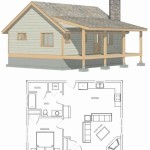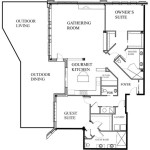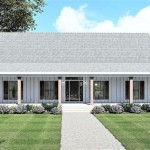Sears And Roebuck House Plans: A Guide to Their History and Legacy
Sears and Roebuck, the iconic American retailer, played a significant role in the development of homebuilding in the 20th century through their popular mail-order house plans. These plans allowed people across the country to access affordable and stylish homes, transforming the housing landscape. This article explores the essential aspects of Sears and Roebuck house plans, their historical context, and their lasting legacy.
Origins and Development
The story of Sears and Roebuck house plans begins in 1908, when the company introduced its first home catalog, "Modern Homes for Moderate Means." This catalog offered a wide range of house designs, from modest bungalows to grand residences, at prices that made homeownership possible for many families. The plans were designed by a team of architects and engineers, ensuring quality and affordability.
Variety of Designs
One of the key strengths of Sears and Roebuck house plans was their variety. The company offered over 400 different designs over the years, catering to diverse tastes and budgets. These designs included popular styles such as Craftsman, Colonial, Tudor, and Mediterranean, ensuring that homeowners could find a plan that suited their preferences.
Affordability and Convenience
Sears and Roebuck house plans were renowned for their affordability. The company's efficient production and distribution system allowed them to offer plans and materials at competitive prices. Additionally, the mail-order format eliminated the need for expensive architects, further reducing the cost of homebuilding.
Standardized Materials
To streamline the construction process, Sears and Roebuck developed a system of standardized materials. These materials, such as windows, doors, and lumber, were pre-cut and ready to assemble, saving time and reducing waste. The use of standardized materials also ensured consistency and quality.
Kit Homes and Prefabrication
In addition to mail-order plans, Sears and Roebuck also offered kit homes, which included all the necessary materials to build the house. These kits were shipped to the construction site, where they could be assembled by skilled contractors or even homeowners themselves. Sears and Roebuck also experimented with prefabrication, where sections of the house were built in factories and then shipped to the site for assembly.
Cultural and Historical Significance
Sears and Roebuck house plans had a profound impact on American society and culture. They made homeownership more accessible, especially for middle-class families. The popularity of these plans led to the establishment of suburban communities and the development of new housing styles. Today, Sears and Roebuck house plans are considered a valuable part of American architectural history and are often sought after by preservationists and enthusiasts.
Conclusion
Sears and Roebuck house plans played a pivotal role in shaping the landscape of American homeownership. Their affordability, variety, and standardized materials made homebuilding accessible and efficient. The legacy of these plans continues to this day, with many Sears and Roebuck homes still standing as a testament to their enduring quality and timeless style.

1916 Sears Modern Home 264b206 Swiss Chalet Craftsman Style Bungalow Westly House Plans Vintage

The Woodland By Sears Modern Homes 1923 Foursquare Kit House

Pin On Modelismo

Sears Modern Homes House Kits From Catalogs Hooked On Houses

1923 Sears Roebuck Kit House In Venice Asking 2 5 Million Vintage Plans American Style

Sears Homes 1908 1940 Myworldweb

Colonial Revival 1923 Sears Kit House Classic Side Gable With Sun Room

The Sherburne 1923 Sears Roebuck Modern Homes Popular For Many Years Provide Craftsman Style Bungalow House Plans

1936 Dayton Kit Home Sears Roebuck 20th Century American Residential Architecture Vernacular Small House Plan

I Just Ordered A Sears Roebuck Catalog Home Riverside Brookfield Landmark








